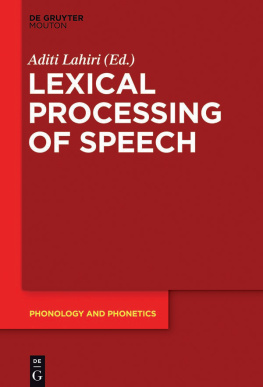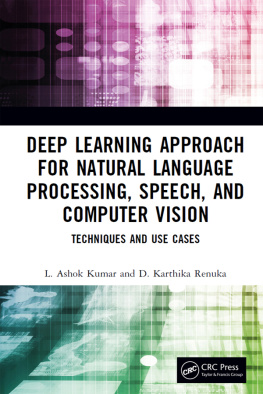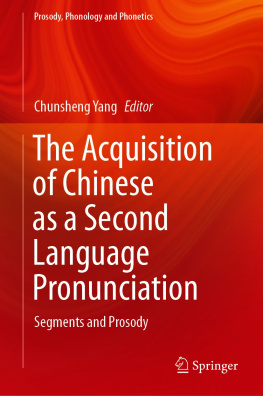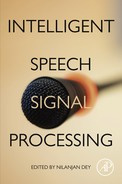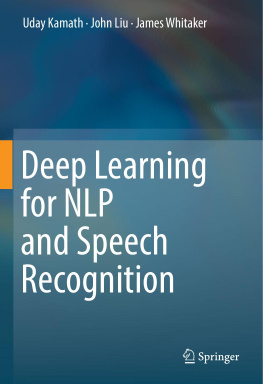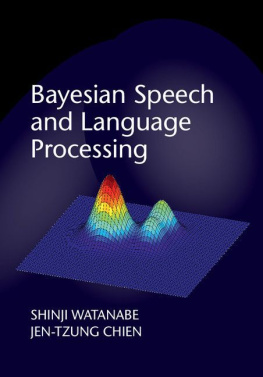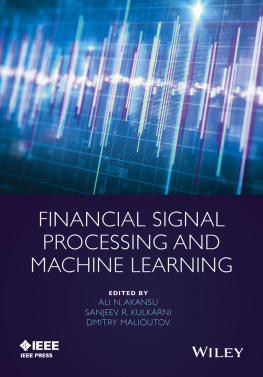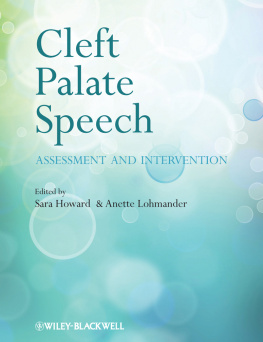Table of Contents
Guide

Aditi Lahiri and Sandra Kotzor (Eds.)
The Speech Processing Lexicon
Phonology and Phonetics

Editor
Aditi Lahiri
Volume 22

ISBN 978-3-11-042573-4
e-ISBN (PDF) 978-3-11-042265-8
e-ISBN (EPUB) 978-3-11-042277-1
ISSN 18614191
Library of Congress Cataloging-in-Publication Data
A CIP catalog record for this book has been applied for at the Library of Congress.
Bibliografische Information der Deutschen Nationalbibliothek
The Deutsche Nationalbibliothek lists this publication in the Deutschen Nationalbibliografie; detailed bibliographic data are available on the internet http://dnb.dnb.de.
2017 Walter de Gruyter GmbH, Berlin/Boston
www.degruyter.com
In acknowledgement of her continuing achievements and
with deep gratitude for her inspiration
To one of the contributors, the rest would
like to dedicate this book:
Sheila Blumstein
Allard Jongman and Aditi Lahiri
Introduction
Allard Jongman , Department of Linguistics, University of Kansas
Aditi Lahiri , Faculty of Linguistics, Philology and Phonetics, University of Oxford
This special volume celebrates Sheila Blumsteins many and sustained contributions to our understanding of language, and in particular, phonological processing. Professor Blumstein has devoted her career to understanding how speech is produced, perceived, and represented in the brain. Working with the legendary Roman Jakobson at Harvard University, she obtained her doctorate in Linguistics in 1970 with a ground-breaking dissertation that investigated the phonology of speech patterns in aphasic patients. This work was based on observations of sound substitutions and errors in patient interviews. Published as a book by Mouton in 1973, A Phonological Investigation of Aphasic Speech clearly indicated the focus of her research: the representation of speech and language in the brain.
Within a few years, Professor Blumstein extended her interests to the acoustics and perception of speech, beginning a long-time collaboration with Ken Stevens at MIT. This turned into a very fruitful partnership, leading to seminal work on the theory of acoustic invariance. This research showed that the mapping between acoustic properties and perceived phonetic categories is richer, and more consistent and invariant, than previously thought, a finding which necessitated a new conception of the relation between the production and perception of speech. It is important to note that at the time that Professor Blumstein started investigating the speech signal in the 1970s, the prevalent scientific opinion was that there was no simple mapping between acoustic signal and perceived phonemes because the speech signal was too variable. Acoustic properties were strongly affected by contextual factors such as variations in speaker, speaking rate, and phonetic environment. Careful consideration of Fants acoustic theory of speech production led her to the hypothesis that invariant acoustic properties could be found in the speech signal. In contrast to previous research that was heavily dependent on the speech spectrograph and its representation of consonant release bursts and vocalic formant transitions as distinct acoustic events, Professor Blumstein focused more on global acoustic properties such as the overall shape of the spectrum at the release of the stop consonant. Through careful and detailed acoustic analysis and subsequent perceptual verification, she uncovered stable invariant acoustic properties that consistently signaled important linguistic features such as place and manner of articulation. Professor Blumstein supported these claims by investigating a variety of speech sound classes (including stop consonants, fricatives, and approximants) in a variety of languages because she fully appreciated that conclusions drawn on the basis of one language can be misleading and universal generalizations can only be made after crosslinguistic comparisons. Professor Blumsteins work on acoustic features resulted in a series of pivotal and influential publications, co-authored with Ken Stevens and her students.
Professor Blumstein subsequently expanded her investigation to understand the processes involved in the recognition of words rather than individual speech sounds. Her research in this domain called for reconsideration of the then dominant view that lexical access proceeds on the basis of categorical phonemes rather than more fine-grained continuous acoustic information. The fact that subtle yet systematic acoustic differences can affect activation of word candidates in the mental lexicon indicated that acoustic information not directly relevant for phoneme identification is not discarded but is retained and plays a critical role in word comprehension. This finding provides a crucial piece of evidence in the ongoing debate about the structure of the mental lexicon.
In parallel to her seminal work on speech acoustics and perception, Professor Blumstein continued her investigation of language and speech processing impairments in brain-damaged patients which she had started with her dissertation. She initially collaborated with Harold Goodglass at the Boston VA Medical Center, who had been a member of her dissertation committee. Goodglass and colleagues were the first to apply experimental and quantitative methods to the study of the syntax of agrammatics. Professor Blumstein subsequently focused on speech processing deficits in aphasics and practically single-handedly launched this field of research which thrives today. Prior to her research in the 1970s, our understanding of the manner in which speech production and perception breaks down subsequent to focal brain damage was based solely on perceptual judgments and phonetic transcriptionboth quite unreliable. She applied her knowledge of acoustics to speech processing in neurologically-impaired populations, affording us an entirely new perspective not only on what is going wrong in these individuals, but providing insights into component processes of the normal system.
Throughout her career, Professor Blumstein was the principal investigator on simultaneous long-term grants for her work on acoustics and for her work on aphasia. In addition to that, she also served as Dean, Interim Provost, and even Interim President at Brown. However, at heart, Professor Blumstein has continued to predominantly be a researcher. After her term as Interim President, she spent a sabbatical leave to master newly developed brain-imaging techniques which allowed her to answer questions that were previously impossible to tackle. Her most recent acoustic research uses fMRI to investigate cortical regions involved in the perception of phonetic category invariance as well as neural systems underlying lexical competition.
Professor Blumstein is co-founder of Brown Universitys Barus Speech Lab where she has taught, supervised, and mentored hundreds of undergraduates, graduates, and postdocs. This lab is one of the worlds leading research centers for the study of speech at all levels: acoustics, psycholinguistic processing, and neurolinguistic processing. The chapters in this Festchrift are all inspired by her work. While they show a remarkable range in topics, they all stay true to Professor Blumsteins original goal: to understand how speech and language are represented and processed in the brain. The chapters cover a wide range of topics reflecting her interests. They vary in their specificity of representation covering a wide range of models, from a more episodic approach considering talker specificity in Drouin et al. to an underspecified representation in Lahiri & Kotzor. The invariance and categorisation of phonological features is touched upon from different perspectives by Professor Blumstein herself as well as in chapters by Jongman & McMurray, Myers et al., Sereno, and Lahiri & Kotzor. Arora & Reetz provide further evidence for the invariance of phonological features (rather than segments) via machine learning. Equally broad is the coverage of phonological units that play a role in the invariance problem: variability in segmental features, duration contrast, stress and tone (cf. Lee) are all addressed. Issues about processing also extend to acquisition, multilingualism and language disorders. We address here concerns with processing phonological information by children (cf. Sereno), non-native speakers as well as speakers with language deficits (cf. Ryalls & Perkins). Phonological shapes of lexical items map on to the semantics and semantic categorisation has been an important research question in Professor Blumsteins work. Finally, the research presented here covers a wide range of methodology acoustic analyses, eliciting speech production, behavioural as well as neurolinguistics experiments all of which have been employed by her.

